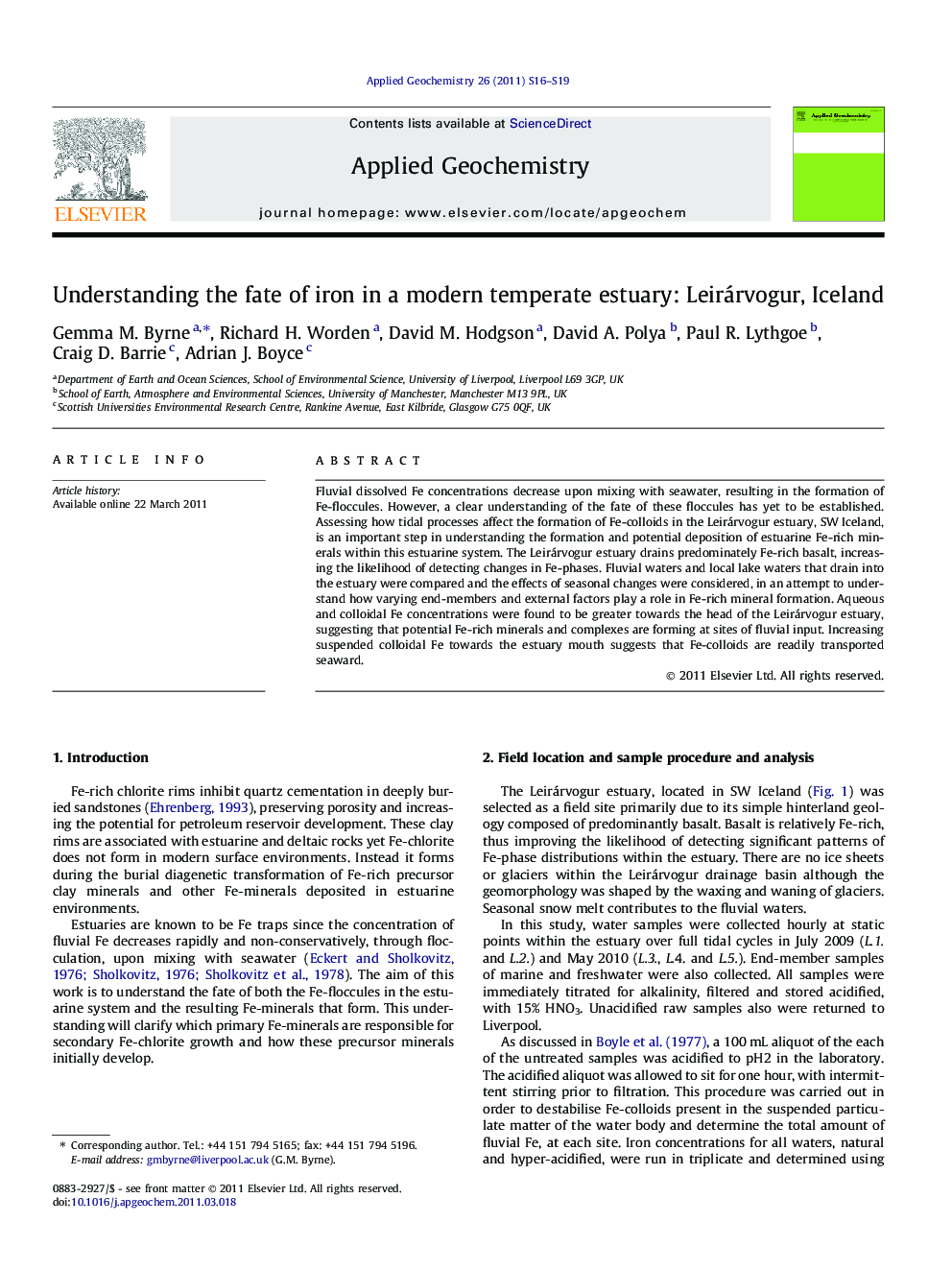| Article ID | Journal | Published Year | Pages | File Type |
|---|---|---|---|---|
| 4436449 | Applied Geochemistry | 2011 | 4 Pages |
Fluvial dissolved Fe concentrations decrease upon mixing with seawater, resulting in the formation of Fe-floccules. However, a clear understanding of the fate of these floccules has yet to be established. Assessing how tidal processes affect the formation of Fe-colloids in the Leirárvogur estuary, SW Iceland, is an important step in understanding the formation and potential deposition of estuarine Fe-rich minerals within this estuarine system. The Leirárvogur estuary drains predominately Fe-rich basalt, increasing the likelihood of detecting changes in Fe-phases. Fluvial waters and local lake waters that drain into the estuary were compared and the effects of seasonal changes were considered, in an attempt to understand how varying end-members and external factors play a role in Fe-rich mineral formation. Aqueous and colloidal Fe concentrations were found to be greater towards the head of the Leirárvogur estuary, suggesting that potential Fe-rich minerals and complexes are forming at sites of fluvial input. Increasing suspended colloidal Fe towards the estuary mouth suggests that Fe-colloids are readily transported seaward.
► Fluvial Fe (aq) and Fe (total) concentrations drop upon mixing with seawater in estuaries. ► The majority of Fe in estuaries is lost in the bay-head delta. ► Our results suggest that the bay-head delta is a key location in Fe-mineral formation. ► Isotopic variation in estuarine waters may play a role in the formation of Fe-minerals.
